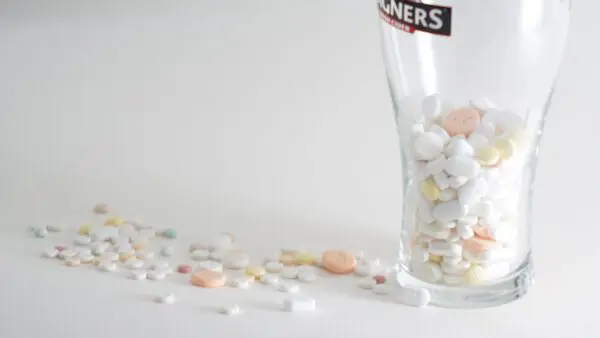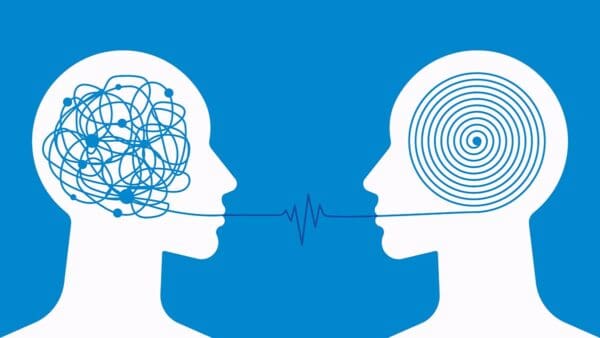Ibogaine for Opioid Addiction
Ibogaine and Substance Abuse Disorder
Ibogaine is well known for its role in opiate addiction treatment. Ibogaine has been shown to eliminate acute opiate withdrawal symptoms and diminish or eliminate post-acute withdrawal syndrome (PAWS) often in a single treatment. Ibogaine is also known for its visionary state. Ibogaine’s dream-like state is not fully understood but is most likely triggered by ibogaine catalyzing across multiple neurotransmitters and receptor sites including serotonin and kappa-opioid receptors, as well as sigma receptors, glutamate receptors, and the cholinergic system.
Unfortunately, ibogaine’s psychoactive mechanism of action is still poorly understood. EEGs performed have shown a similar process to rapid-eye-movement (REM) occurring, classifying ibogaine as an oneirogen and not a traditional hallucinogen. It is theorized there is a state of neuroplasticity during the “waking dream” that allows for rapid reconsolidation of learning as well as “unlearning” of reactive behaviors. The insights one receives during this experience may help individuals get to the roots of their dependency and move forward with new habits.
However, individuals with significantly large opiate habits may not see their dependency eliminated with a single ibogaine “flood dose”, a large dose of ibogaine that “floods” the receptors and puts the participant in a waking dream state (flood dosage is individualized to the participant’s physiology, weight, ECG, size of opioid habit, and sensitivity to ibogaine). They may also need a short series of booster doses administered in the days following their flood dose if PAWS is an issue.
Long-acting opioids like buprenorphine (Suboxone) and methadone have created some diversion from well-practiced ibogaine treatment protocols. According to many ibogaine providers in the field, long-acting and synthetic opioids may require a long period of time on a short-acting opiate (SAO) before treatment to avoid breakthrough and post-acute withdrawals (PAWS). Before we dive into the new challenges of ibogaine treatment, we will review some basics about opiate dependence and treatment today.
Opiate Dependency
Opium has been used in traditional medicinal remedies for millennia. Short-acting opiates (SAOs) such as heroin are derived from opium. Opiates are drugs that work by binding to opioid receptors, which inhibit pain signals from being sent to the brain. This makes opiates powerful medicines for alleviating pain and easing suffering.
In addition to their analgesic effects, they produce pleasurable effects such as euphoria or feelings of relaxation. However, because they bind so tightly with these receptors, it can lead to dependence and addiction when abused for an extended period of time. The most common types of street opioids are heroin and the synthetic opioid fentanyl, while buprenorphine (Suboxone) and methadone remain popular maintenance opioids.
Maintenance opioids such as Suboxone and methadone are semi-synthetic and synthetic long-acting opioids. These are usually prescribed to help people stop using opiates like heroin. Suboxone binds to the receptors in the brain that would normally be occupied by heroin, reducing withdrawal symptoms and blocking the effects of other opiates.
Opiate Withdrawal
Symptoms of opiate withdrawal mimic a severe-flu like illness with the addition of depression. If untreated, persistent vomiting or diarrhea can lead to electrolyte imbalances and stress the heart. The onset of withdrawal for short-acting opioids such as heroin is usually between 8-24 hours since last use and lasts for 4-10 days.
Withdrawal with synthetics such as fentanyl, Suboxone, and methadone is longer. The onset of withdrawal can begin 12-72 hours after last use and last for weeks and even months. There are many anecdotal reports of people who are prescribed Suboxone being in withdrawal for up to 90 days, as well as people who use fentanyl and methadone being in withdrawal for weeks or longer, despite current literature that suggests withdrawals from these synthetics should be much shorter. This creates challenges for ibogaine providers who need protocols that will guarantee a person can leave an ibogaine treatment without withdrawals.
Mesolimbic Reward System and Withdrawal
One of the brain circuits activated by opioids is the mesolimbic (midbrain) reward system. This system generates signals in a part of the brain called the ventral tegmental area (VTA) that result in increased release of dopamine, causing euphoria and pleasure associated with opioid use.
“Conditioned associations” are links between an individual’s environment and how they feel when that environment triggers thoughts of drug use. These are memories imprinted in the brain, and encountering these places, and people can lead to cravings for drugs, feelings of withdrawal, or feelings of pleasure.
The mesolimbic system is involved with tolerance, cravings, and dependence; as a result of repeated opioid use, the reward center becomes less responsive to naturally rewarding stimuli such as food and sex.
Kratom as an Opiate Substitute
Some people who experience opiate dependencies turn to kratom, an extract from a tree in the coffee family that grows in sub-tropical regions such as Thailand and Malaysia. Kratom has different effects at different doses, and in higher doses, it can be used as an opioid substitute and in managing opiate withdrawal symptoms.
Kratom is currently legal in the U.S. aside from five states and can be bought without a prescription at health food stores, gas stations, tobacco shops, and other stores. Some states have introduced restrictions such as age (Oregon), but kratom remains largely unregulated in the U.S.
Kratom contains a compound called mitragynine that is cardiotoxic, prolonging the QT interval and potentiating Torsades de Pointes. Kratom is contraindicated with ibogaine as a result of its cardiotoxicity and complex pharmacology, specifically at serotonin transmitters.
Tramadol, a synthetic opioid with a low affinity at opioid receptors that also acts as an SNRI, can also possess withdrawal symptoms similar to antidepressants. Tramadol and kratom may have similar withdrawal symptoms. Some ibogaine providers advocate for longer times away from these substances before ibogaine to bypass the antidepressant withdrawal effects and cardiotoxicity in the case of kratom.
Opiate Detox With Ibogaine
Finding an Ibogaine Clinic
Prospective clients will need to seek out an ibogaine clinic that is proficient with opiate detoxes and has the capability to stabilize them on an SAO for multiple days before treatment. This will allow a provider to get to know the client’s rate of opiate metabolism, physiology, and sensitivity to ibogaine before the ibogaine treatment begins. Ibogaine clinics are located around the world, mostly concentrated in Mexico and Central America. Vet options thoroughly as opiate detoxes can be complex and carry higher risk, and as we discuss in this article, fentanyl and the new era of opioid use has created the need for new ibogaine protocols that not all providers adhere to.
Ibogaine Treatment for Opiate Withdrawals
Once ingested, ibogaine is metabolized by the liver and converted into a compound called noribogaine. This molecule interacts across many brain systems, including opioid receptors, and may be responsible for many of ibogaine’s long-lasting benefits.
Ibogaine is typically administered in a “flood” dose by ibogaine providers in a clinic about 9-12 hours after a client’s last opiate dose. In several studies on ibogaine, opiate withdrawals, tolerance, and cravings were completely eliminated within the first 48 hours of treatment, with initial withdrawals subsiding within the first three hours.
In one study, post-acute withdrawal syndrome (PAWS), drug cravings, and depressive symptoms measured by the Beck’s Depression Inventory were significantly alleviated and documented in observational studies in the days after ibogaine treatment. Patients also experienced psychological introspection and insight.
Finally, there seems some variability in ibogaine’s ability to interrupt withdrawal symptoms with synthetic opioids like fentanyl. Most providers will suggest a “switch-over” time to an SAO to avoid PAWS and medical complications during treatment.
Ibogaine Safety With Opiates
A prolonged QT interval is a QTc at or above 440ms in men and 460ms in women. Borderline QTc ranges used in ibogaine treatment to screen for potential ibogaine candidates may vary but are often around 420-440ms. Ibogaine prolongs the QT/QTc, which increases adverse reactions such as fatal arrhythmias.
In a 2020 study, 14 opioid-dependent individuals (all screened for exclusion criteria) were stabilized with morphine for eight days and then given 10mg/kg of ibogaine HCL to assess average QTc prolongation. Half of the participants had a QTc above 500ms. After 24 hours, half of the participants were still prolonged over 450ms. The study highlights the dramatic impact of ibogaine on QT/QTc even in a relatively small flood dose. The study also suggested that repeated low dosing protocols should be further explored, especially for higher-risk clients.
A repeated and low dosing protocol is a newer protocol some providers advocate for individuals who don’t meet all of the inclusion criteria for a flood dose or those on long-acting opioids that cannot complete a switch-over to an SAO. However, it requires vigilant safety and a provider proficient in the methodology. It cannot be stated enough to vet providers thoroughly.
Ibogaine is often dose-dependent for opiate habits. The larger an opiate habit, the more ibogaine someone might need. QTc may prolong with dose as well. People who use opioids are advised to exercise caution when choosing a center and be evaluated thoroughly by an ibogaine provider.
New Challenges in Ibogaine Therapy***
Ibogaine works as a rapid and effective addiction “interrupter” for short-acting opiates (SAO) such as heroin, oxycodone, hydromorphone, hydrocodone, codeine, and morphine. However, many providers report that persons using maintenance opioids, semi-synthetic, and synthetic opioids sometimes experience breakthrough withdrawals during a flood dose and may experience post-acute withdrawal syndrome (PAWS) for many weeks or months if they don’t switch to an SAO for an extended period of time beforehand. PAWS is characterized by impairments that can last for weeks or months and relate to mood disorders, insomnia, and anxiety following withdrawal from some drugs.
In recent years, ibogaine treatment for opiates has become less straightforward with the many different opioid options we have today. Nearly all street opiates may be cut with fentanyl, reports of a quinine cut source of heroin called “scramble” has been found on the east coast (thus automatically prolonging the QT), kratom — while not a traditional opioid — appears to cause opioid-like withdrawals, and a rise of people interested in quitting buprenorphine (Suboxone and Subutex) and methadone have all created unique challenges with ibogaine treatment protocols. The number one challenge is that without a switch-over to an SAO for a sufficient amount of time, withdrawals are a part of treatment, defeating one of the main reasons people seek out ibogaine.
New Synthetic Opioid Treatment Protocols, What is the Answer?
Ibogaine providers and former people prescribed Suboxone repeatedly talk about post-acute withdrawal syndrome (PAWS) after ibogaine on internet forums and within the ibogaine community and the need for longer switch-over times industry-wide; it was even a topic at the 2014 Global Ibogaine Therapy Alliance annual conference. Some providers agree that switching to an SAO for 90 days is the only way to guarantee an absence of PAWS. There is currently no research regarding the protracted withdrawals for months that ibogaine seekers and those who opt for tapering off Suboxone sometimes experience.
Withdrawals from synthetics and long-acting opioids, including compounds like kratom are anecdotally very individualized. Some people need less time than others, but there is no diagnostic tool to predict who will need less time. The question has to be asked, is it worth rushing into treatment to possibly have withdrawals for weeks or months? Currently, some ibogaine providers ask for a 90-day switchover in someone prescribed Suboxone, citing they haven’t seen any withdrawals or PAWS if an individual waits this long. Some providers also ask for at least a month on an SAO for methadone, two weeks for fentanyl, one to three weeks for kratom (often depending on diagnostic tests and habit size), and tramadol can vary from 2-6 weeks (also depending on habit size and length).
One thing that all of these opioids have in common is they are semi-synthetic or synthetic opioids. Natural occurring short-acting opiates do very well with ibogaine. The other thing they all have in common is that they present very unique challenges for ibogaine providers and those seeking out ibogaine treatment. Protocols tend to be individualized to fit each client’s needs, but making an incorrect guess for a switch-over time may lead to debilitating withdrawal symptoms. In the case of synthetic opioids, longer time off may be better.
Where is Ibogaine Treatment for Opiates Headed?
Unfortunately, fentanyl and heroin use is at an all-time high, which will invariably lead to more prescriptions of Suboxone and methadone. The desire to quit opioids without withdrawals is not a sentiment that is going away. The ibogaine community needs to brainstorm programs and protocols to assist persons who have found themselves in the challenging category of needing multiple weeks or months on an SAO to serve their client base better. Internet forums often contain posts of people leaving centers in withdrawal.
Until research dives into the neurobiology of why people experience withdrawals for so long, the ibogaine community is left with questions, baseless theories, and many people who are desperate for help. This desperation in an unregulated industry has left a space for some centers to promise they can detox people straight off Suboxone or methadone. Educating people who are interested in ibogaine treatment is the best way to protect people.
The good news is that ibogaine remains to seamlessly eliminate short-acting opiate withdrawals such as heroin, morphine, and oxycodone. It is still possible to get treated for opiate dependency, but some people might have a longer path to treatment.
***We do not have clinical evidence for why fentanyl, Suboxone, methadone, kratom, tramadol, and other synthetics produce such variable withdrawal times in individual people. This article offers anecdotal evidence and observational claims from ibogaine providers who have a combined 25 years of experience with ibogaine, as well as many stories from former clients. Also, a thank you to Agnes Bos for her continued insight and knowledge.









